
The Tongariro Northern Circuit crosses 45 kilometres through the the volcanic heart of Tongariro National Park. From alpine herbfields to forests, and tranquil lakes to desert-like plateaux, you’ll journey through a landscape of stark contrasts with amazing views at every turn in this dual World Heritage site. As the circuit winds past Mount Tongariro and Mount Ngauruhoe, you'll be dazzled by dramatic volcanic landscapes and New Zealand’s rich geological and ancestral past.
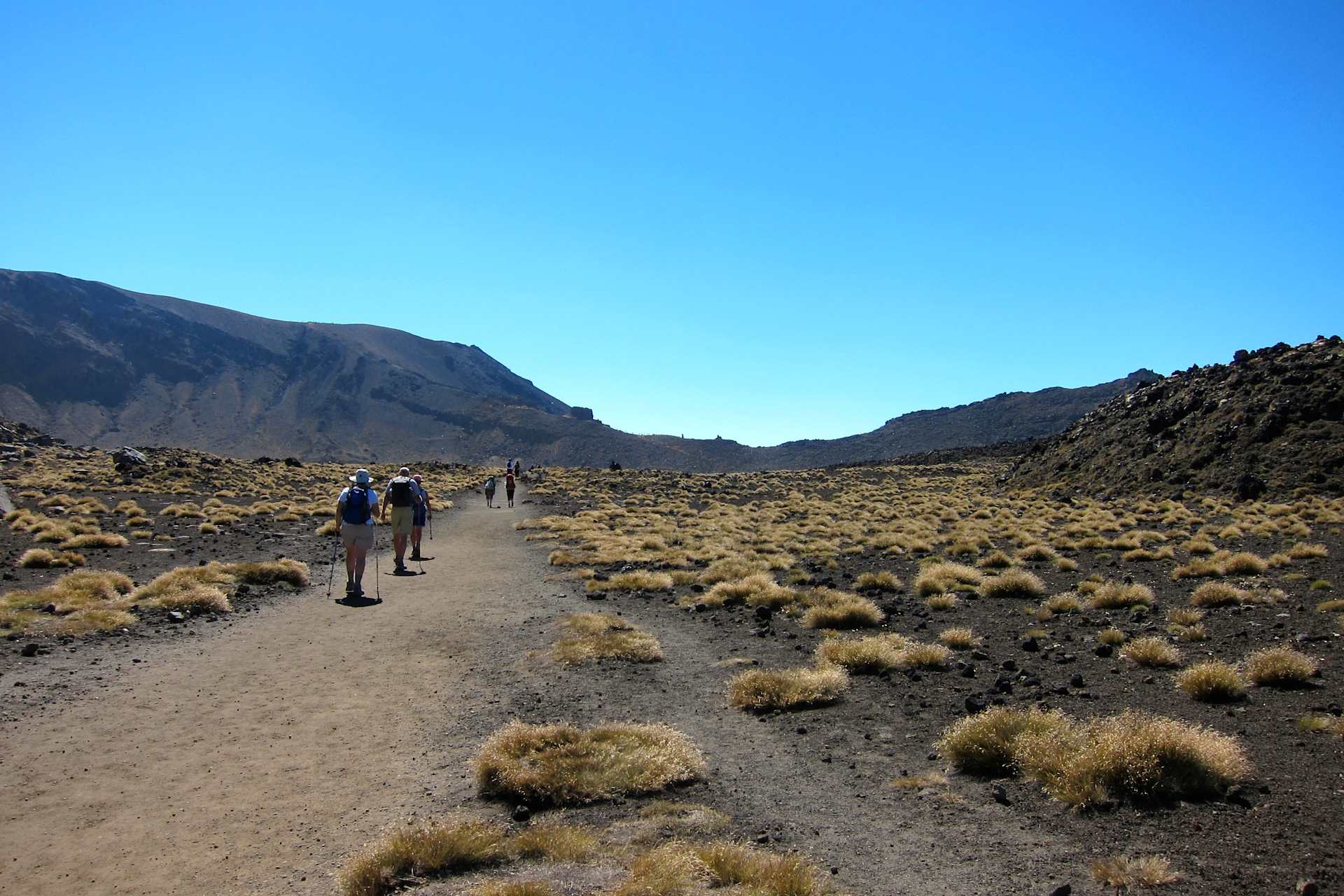
Location: Where is the Tongariro Northern Circuit?
The Tongariro Northern Circuit is easy to get to by private car or public transport - the Whakapapa Village is the start and finish point for the circuit. The circuit can be hiked in either direction and it's well marked and signposted, though some sections may be steep, rough or muddy. Most people take 3 or 4 days, with 2 or 3 overnight stays though very fit people can walk it in 2 days, but each day is at least 8 hours.
There's a bus service and train service that runs on alternate days, stopping in the National Park Village on route between Auckland and Wellington. The National Park Village is 15 kilometres from the Whakapapa Village and local shuttle services are available for transfers to the village.
If you're self-driving, there's overnight parking areas available and you can visit the Tongariro National Park Visitor Centre for directions to these areas and to receive a free parking permit.
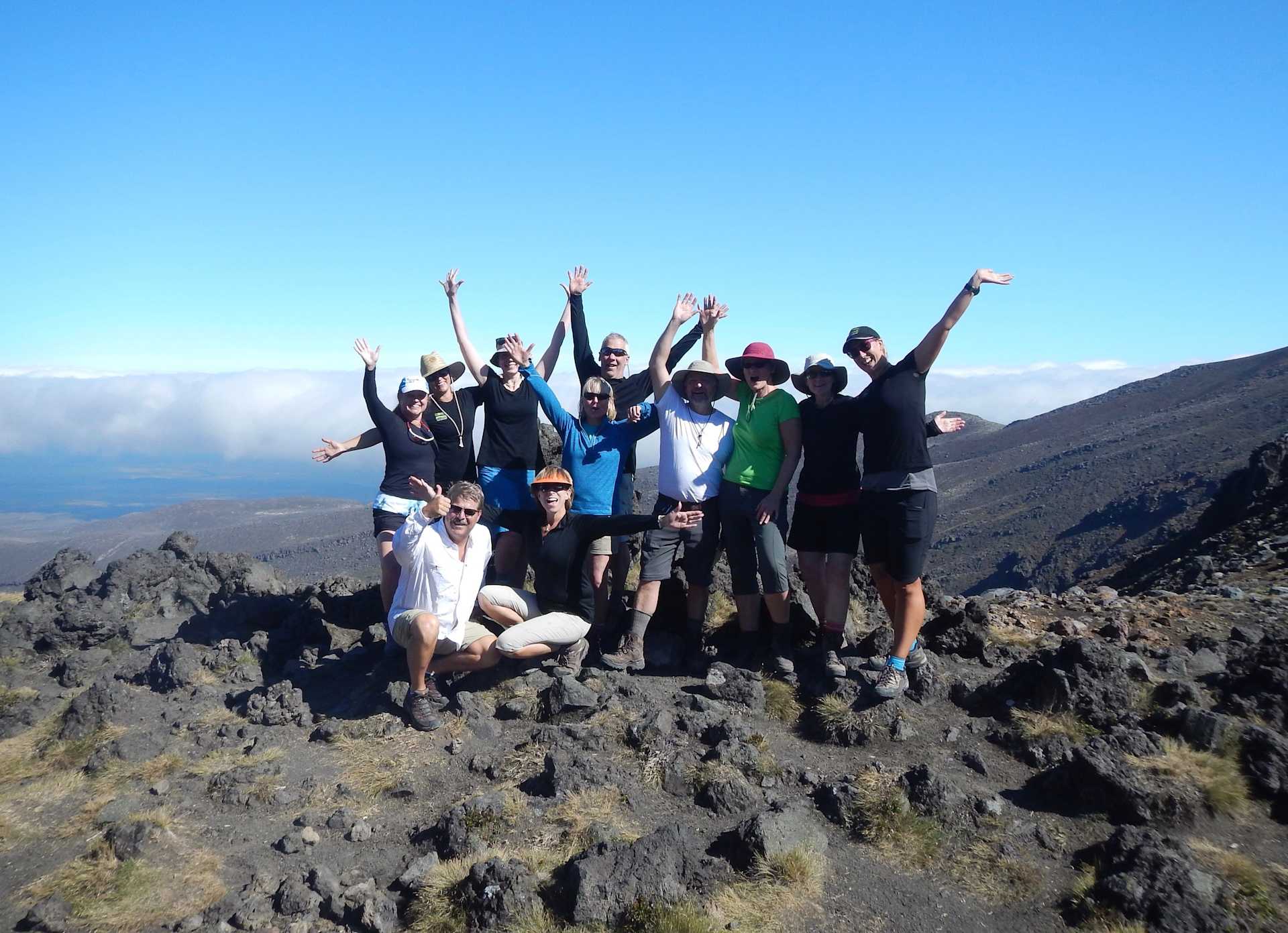
Weather on the trail: When is the best time to hike the Tongariro Northern Circuit?
The weather in Tongariro National Park is often more extreme than other places in the North Island so you must be prepared for cold, wet, snowy/icy, or windy weather at any time of year. Daily and monthly temperatures can vary greatly though the temperatures average 13°C (55°F) with a maximum temperature of 25°C (77°F) and a mid-winter minimum of -10°C (14°F).
The safest and most popular time of year to walk the Tongariro Northern Circuit is during the summer months (December to March) when the tracks are normally clear of snow and the weather is less severe. During this time, daylight hours are much longer and daytime temperatures can get into the teens or 20s°C.
Though be aware the weather can change suddenly, from warm and sunny to cold and wet with strong winds of over 60km/ hour that can close the track. Heavy rain can also occur with little warning and even small streams are dangerous in flood.
In winter months the snow level extends down to an average of 1,500 metres, and often lower with snow/ice covering all or parts of the track, and avalanche risk may apply. Alpine experience and equipment is normally required during this period (crampons and ice axe, possibly avalanche transceiver, shovel and probe).
Active Adventures tours to New Zealand's North Island are year-round with the option to take on the Tongariro Alpine Crossing even in winter. When conditions are not suitable for crossing, guests hike to Taranaki Falls and Silica rapids before bathing in natural thermal springs nearby.
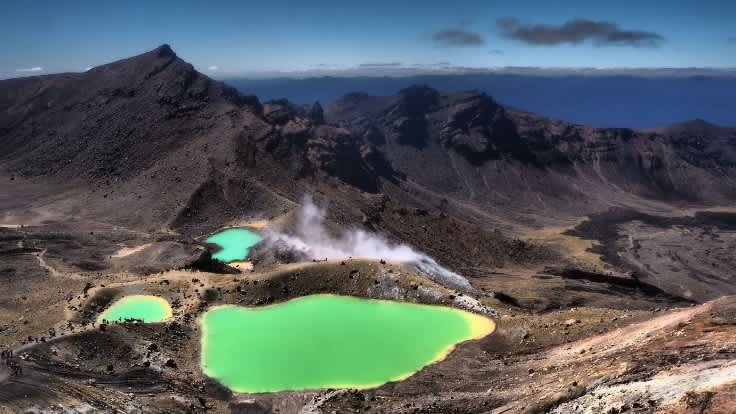
Fitness: How fit do you need to be to hike the Tongariro Northern Circuit?
The Tongariro Northern Circuit is difficult terrain – most of it is open, exposed and on uneven track surfaces therefore a moderate to good level of fitness is required. You'll need to be able to carry all your own gear over rough rocky uneven surfaces, climbing and descending for up to 15 kilometres (9.3 miles) a day with a maximum elevation gain of 600 metres (1,970 feet). It's an ideal trip for groups or individuals and you should start a regular walking programme 1-2 months before your departure on the track. This programme should include some practice at carrying your pack on hills or stairs.
This track is also not recommended for children under the age of 10 due to the exposed mountain environment and weather that can change quickly.
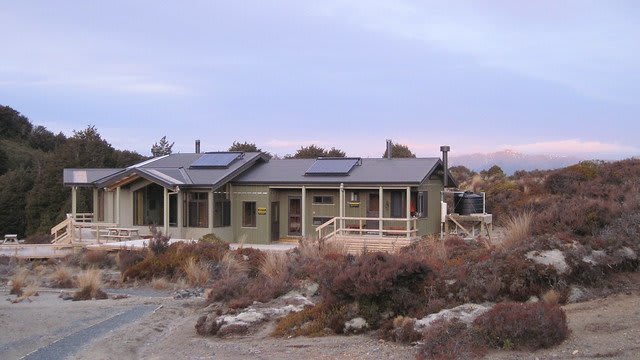
Accommodation and facilities on the Tongariro Northern Circuit
Backcountry Huts
There are three Department of Conservation huts (with campsites) on the track - Mangatepopo Hut, Oturere Hut, Waihohonu Hut.
During the Great Walks season (Late October through until end of April) the huts are supplied with heating, toilets, basic gas cooking facilities, heating, solar-powered lighting and cold running water. Walkers sleep in communal bunkrooms with mattresses provided. DOC rangers are in residence over the booked walking season. They're equipped with radios for use in emergencies and for weather forecasts.
Outside the Great Walks season facilities are greatly reduced (no cooking stoves and water may be frozen) and there are no DOC rangers.
The campsites offer basic facilities including toilets, sinks and a water supply. Some also have picnic tables and cooking shelters. Campers may use hut facilities, though not the beds.
Track etiquette and how to prepare
Travel Insurance
We recommend you arrange travel insurance to guard against loss of costs associated with cancellation or delay of your trip. The Department of Conservation will not be liable for injury, damage or any costs incurred by intending walkers. Emergency evacuation from the track can only be arranged by Conservation staff. For your own safety please sign hut books when you arrive. Know the symptoms of exposure. React quickly by finding shelter and providing warmth. If you become lost, stop, find shelter, stay calm and try to assist searchers.
Please remember when trekking in New Zealand
- All plants, birds and animals in the park are protected
- Please carry your rubbish out of the park
- No dogs or domestic pets are allowed
- Hunting is by permit only. Permits can be obtained from the Department of Conservation
- Fire is a major threat. Fires should only be lit in designated fireplaces. Please make sure fires are extinguished properly before you leave, and use portable stoves for cooking.
- Smoking is not permitted in the huts and shelters.
- Wasps and sandflies can be a problem. Carry insect repellent and antihistamines in case of allergy
- Possums are a pest and damage native trees. Do not encourage them by leaving food outside overnight
Please remember when trekking the Tongariro Northern Circuit
- There are several active volcanic vents along the Tongariro Northern Circuit: Mount Ngauruhoe, Red Crater and Te Maari. Volcanic hazard zones surround these vents. If you're in one of these zones when an eruption happens, you may be in danger. Volcanic risk exists at all times, including when the track is open. If you're uncomfortable with this risk, we recommend selecting an alternative track.
- Most of the track is on rugged and exposed alpine terrain, although there are sections of formed track/boardwalk. There are only two sections of forest - near Whakapapa Village, and near Waihohonu Hut. The lowest altitude of the track is 1120 metres, and the highest (at Red Crater) is 1886 metres.
- The weather can change suddenly - from warm and sunny to cold, wet and windy.
- Most streams are bridged and there are no large river crossings, but heavy rain could cause flooded streams to become difficult to cross safely. Be prepared to wait for water levels to drop.
- Major hazards are generally managed on the track during the summer (October to April), and in winter the main hazard is snow/ice on the track.
- We recommend that you treat stream water to guard against risk of infection from giardia and other bugs.
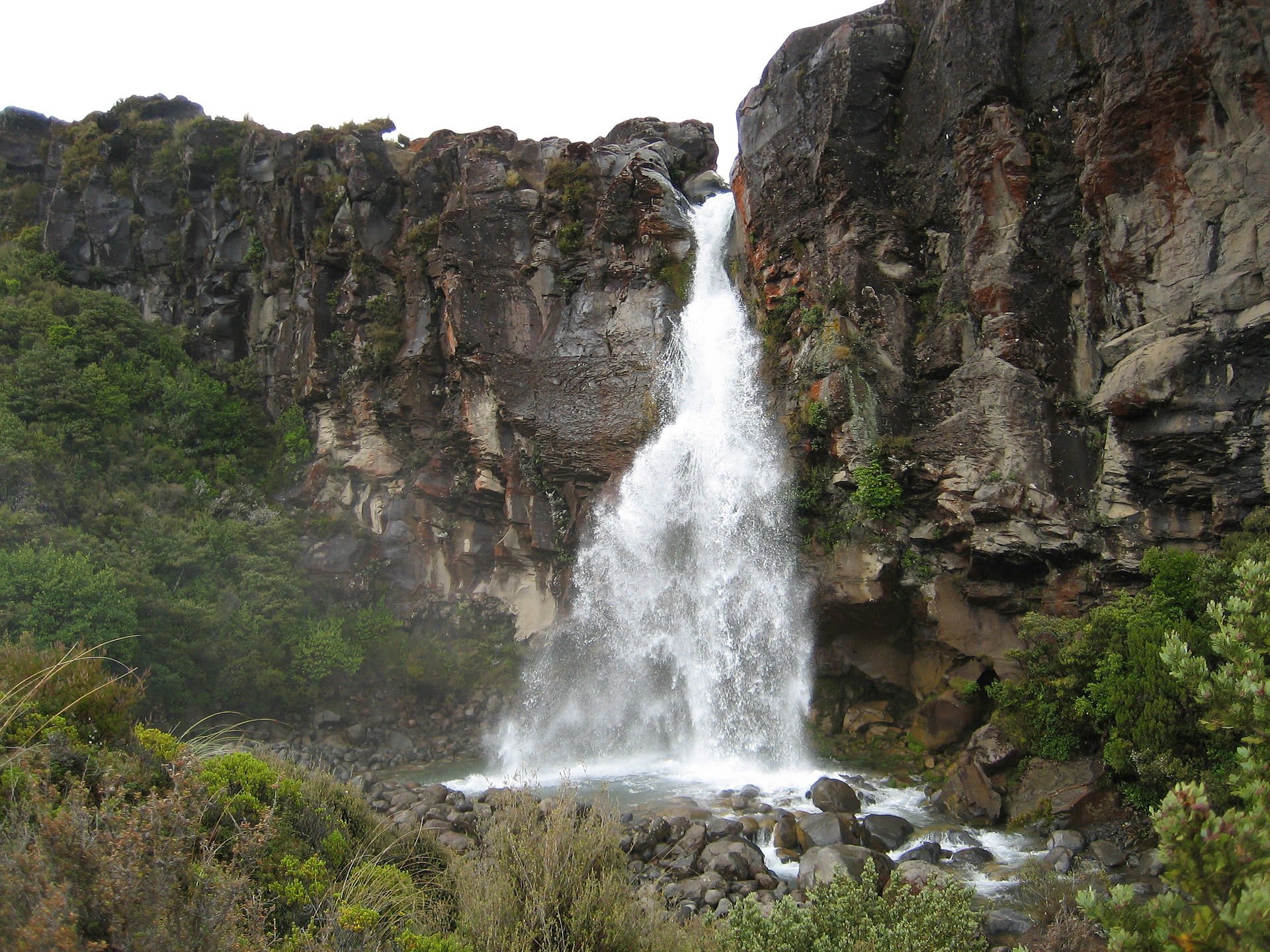
How to book the Tongariro Northern Circuit
Booking is essential to guarantee your hut or campsite between October and late April. Outside this time during the winter season no bookings can be made and tickets for huts can be purchased from the Department of Conservation Visitor Centres just prior to departure. Bookings can be made on the DOC website each year for the coming summer season. There is a two-night limit on staying at each hut and campsite during the peak (summer) season and a three-night limit on staying at each hut and a five-night limit on staying at each campsite during the off-peak (winter) season.
The booking system assures you of a bunk for the night. It avoids the need to rush to get to huts early to get a space or to carry a tent in case you miss out. You can walk and enjoy the track at your own pace.
Concessions for Active Adventures mean that accommodation is available year-round for North Island tours and guests don't need to worry about limits and hut tickets.
Detailed itinerary
Times are approximate only and will vary according to fitness and the pace of your group.
The track can be walked in either direction and you can walk the whole track or walk into one of the huts and return the same way, spend a single night at one of the huts; or stay up to two nights at each of the two huts or two campsites. The choice is yours. This guide describes the track walking clockwise:
Day 1: Whakapapa Village to Mangatepopo Hut - 9.4 kilometres, 4 hours
Your journey begins by making your way across the eroded plains of the Tongariro volcanic complex, a series of explosion craters and volcanic cones and peaks. Venturing through a landscape carved out by ancient
lava flows and stream beds, you’ll be dwarfed by the massive cone of Mount Ngauruhoe on your right. For the final hour the track leads you around Pukekaikiore, one of Tongariro’s older steam vents, before reaching
Mangatepopo Hut.
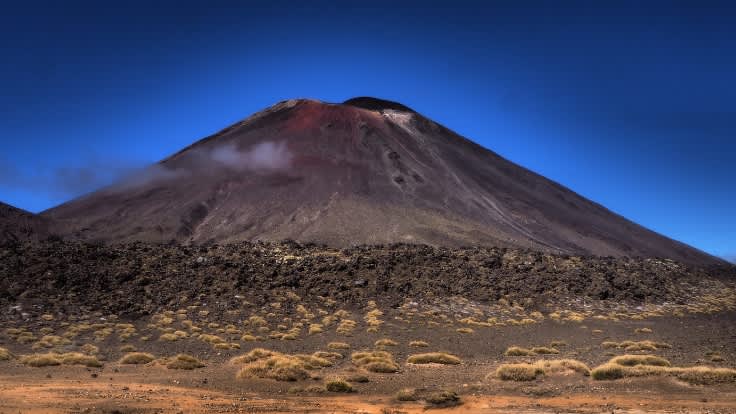
Day 2: Mangatepopo Hut to Oturere Hut - 12 kilometres, 5 hours
You join the popular Tongariro Alpine Crossing on the second day, crossing remnants of lava flows and climbing steeply up Te Arawhata to the expansive Red Crater. Here you’ll be dazzled by the aptly named Emerald Lakes (Ngā Rotopounamu), and a side trip (30-minute return) will take you to the equally amazing Blue Lake (Te Wai Whakaata o te Rangihīroa). These lakes are tapu or sacred to Ngāti Tuwharetoa.
Please do not touch the water. You’ll then leave the Alpine Crossing track and descend into Oturere valley.
Along this track, you’ll pass through a landscape of other-worldly lava forms before reaching Oturere Hut.

Day 3: Oturere Hut to Waihohonu Hut - 8.1 kilometres, 3 hours
On day 3 the circuit continues through this unique environment. After crossing stream valleys and open gravel fields, the track gradually sidles around the foothills of Ngauruhoe, before descending into a beech-forested valley and crossing a branch of the Waihohonu Stream. A steep climb takes you to the top of the ridge where you’ll spot tonight’s stay at Waihohonu Hut.
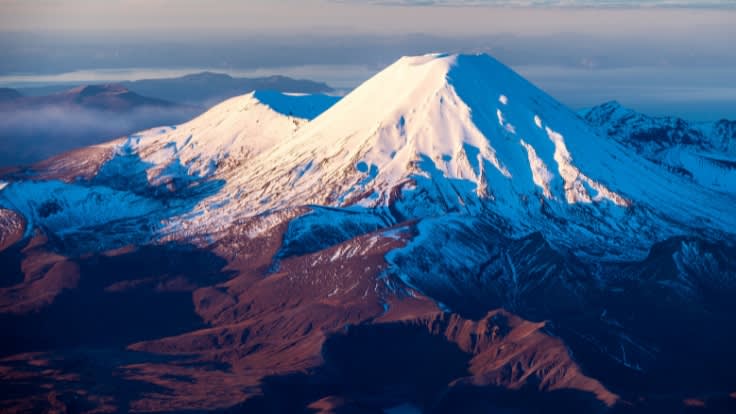
Day 4: Waihohonu Hut to Whakapapa Village - 15.4 kilometres, 5-6 hours
You’ll begin your final day following the Waihohonu Stream as you head west towards Tama saddle, cradled by the towering Mount Ngauruhoe on your right and Mount Ruapehu on your left. On reaching the Tama saddle, a detour will take you to the beautiful Tama lakes (Ngā Puna a Tama) – empty craters now filled with azure blue water. From here, you’ll pass the tumbling Taranaki Falls before returning to your starting point at Whakapapa Village.
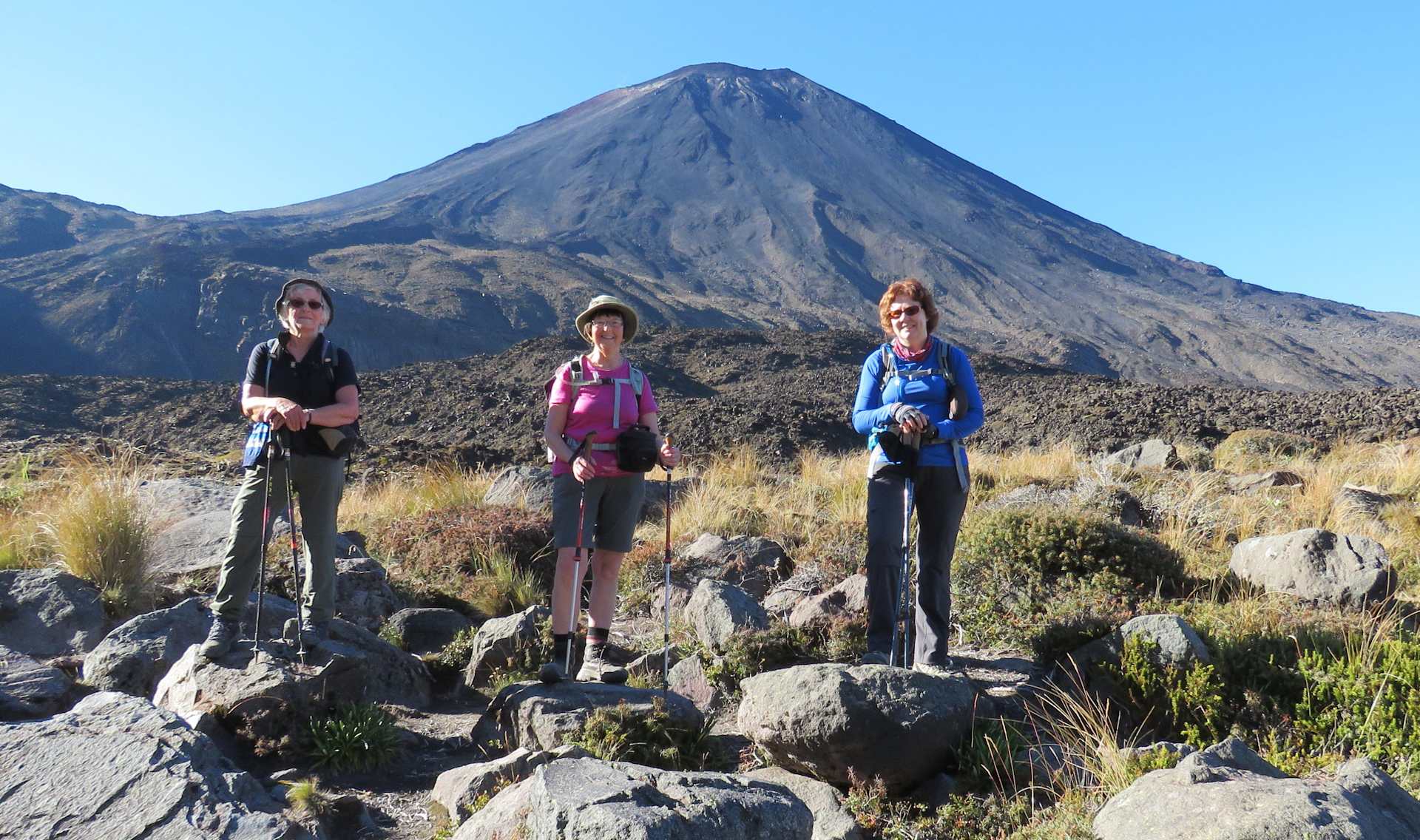
Gearlist: What you need to pack
For your own safety it's essential to carry the equipment listed below, no matter how warm it is on the day of departure.
Most equipment is available for hire or purchase in Turangi or Taupo, as well as a full range of food. Whakapapa Village has limited resources and no supermarket.
Clothing
- You will need at least one set of clothes to walk in, and another dry set to change into at night.
- Boots: need to be comfortable and well broken in.
- Socks: (wool/polypropylene) 2 pairs
- Shorts: (cotton/ nylon)
- Shirt: (wool/polypropylene)
- Long Johns or trousers: (wool/polypropylene)
- Jersey or Jacket: wool/polypropylene)
- Undershirts/ T-shirt: (wool/polypropylene)
- Mittens/Gloves: (wool/polypropylene)
- Woolen hat /balaclava & sun-hat
- Raincoat: (waterproof, windproof with hood)
- Extra socks, underwear, shirt or lightweight jersey.
- Warning - synthetic clothing is flammable.
- It's essential that this clothing is carried as your safety and the safety of others could depend on it.
- NB: cotton clothing such as jeans, T-shirts, sweatshirts are NOT suitable.
Personal Equipment:
- Pack: with large waterproof liner
- Sleeping Bag: good quality down or hollofil
- Matches/ Lighter: in waterproof container
- Torch: spare batteries
- Eating utensils: Knife, fork, spoon, plate, and cup
- Cooking utensils: pot/pan/billy, pot scrubber
- Toilet gear: soap, toothpaste, toilet paper, small towel (remember do not wash in lakes or streams)
- First Aid Kit: insect repellent, sunscreen, blister kits, pain relief, and assorted bandages
- Survival Kit: Survival blanket, whistle, paper, pencil and spare days food.
- Drink bottle: you need to drink regularly during day
- Optional extras: sunglasses, camera, and lightweight shoes for in hut, earplugs for communal bunkrooms
- Campers need to carry gas cookers, tents and bedrolls.
- Outside the booked walking season walkers will also need to carry gas cookers and mountain radios.
Food
- Is not available for purchase on the track.
- Food should be lightweight, fast cooking and high in energy value e.g.
- Breakfast: cereal, firm bread, honey or other spreads
- Lunch: cracker biscuits, cheese, salami, margarine, jam/jelly, powdered fruit drink, fruit
- Dinner: instant soup, pasta/rice, dried vegetables/fruit, cheese or dehydrated (freeze dry) meals.
- You will also need: snacks, biscuits, muesli bars, tea/coffee, powdered drink, emergency food in case of any delays on the track.
Water
You'll need to drink regularly while walking, even on cooler days, to avoid dehydration. You need to carry some water, as you may not be able to find any enroute. Giardia may be present in some areas. Regular testing is not carried out. If you wish to treat the water you can boil water for 5 minutes, use a filter, or chemically treat it. Drinking water at the huts and shelters comes from the rivers and lakes.
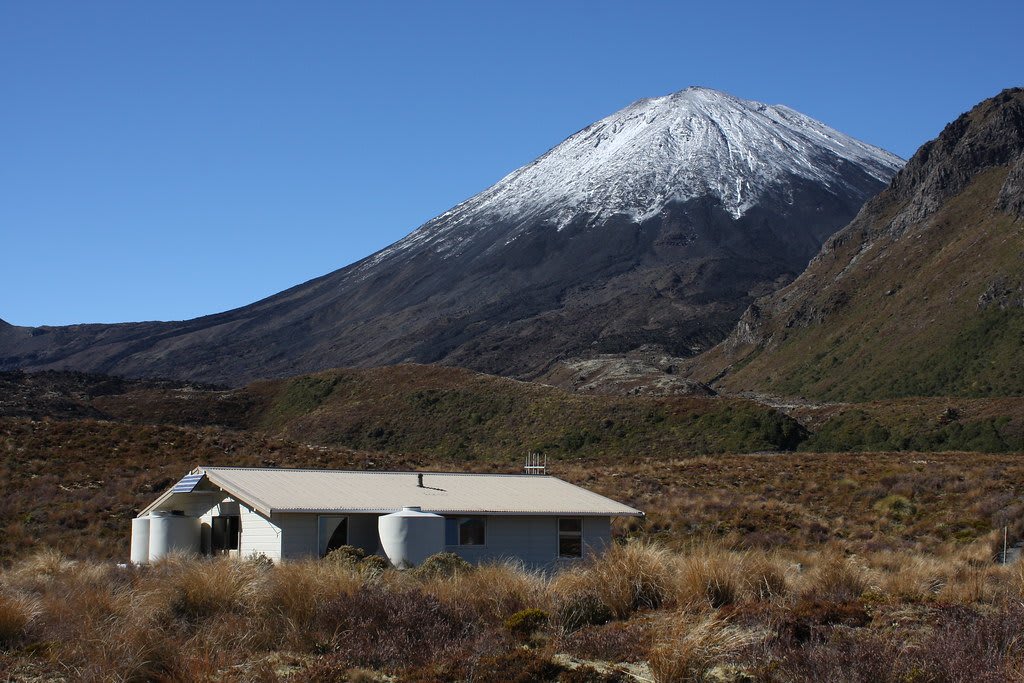
A bit of extra background about the Tongariro Northern Circuit
Tongariro, shrouded in alpine mists, its gnarled and battle-scarred majesty reaching to the sky. Ancient stories of epic bygone battles, thunder and lightning relive the time when the Great Mountains fought for the hand of the beautiful Pihanga. Tongariro emerged victorious. A story of love and devotion that has spanned millennia, from before the ancient mists of time, from a time where the mountains ruled upon the land.
This is the world of Ngāti Hikairo ki Tongariro. These are the stories of Ngāti Tuwharetoa and, more importantly, these are memories of our mountains, of our Gods and of our tribal history and identity. They're carried on each mountain breath, every facet of the landscape reflects this epic past, each shadow holds a story, each breeze carries the whispers of yesterday. Tongariro the spring of passion, Tongariro the devoted lover, Tongariro the source of life-giving waters, Tongariro the Warrior Mountain, Tongariro the soul of Tuwharetoa.
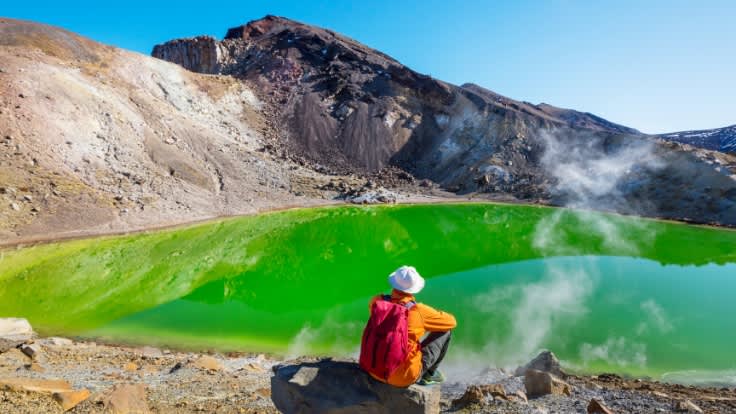
Flora and Fauna: What to look for on the Tongariro Northern Circuit
This is the perfect habitat for a variety of New Zealand’s native birds. In forested areas you may see bellbird/korimako, tui, robin/toutouwai, tomtit/miromiro, fantail/piwakawaka, and maybe New Zealand's smallest bird the rifleman/titipounamu.
Look for the New Zealand falcon/kārearea, capable of flying at speeds over 100 km/h and catching prey up to 6 times their body weight.
You might also be lucky enough to spot blue duck/whio in a stream, and in open terrain areas you may see pipits, skylarks, the rarer karearea/falcon or kaka, and even some wayward seagulls who live in the area in summer!
Brush up on your botanical knowledge – the plants in the area vary considerably: alpine herbs, tussocks, flaxes, low-growing shrubs, dense beech forests and, during summer, a diverse range of beautiful and
unique alpine flowers.
Discover the Tongariro Crossing on a New Zealand North Island tour with Active Adventures
Want to join a small-group, fully-guided tour of the Tongariro Northern Circuit and the Tongariro Crossing? Explore the North Island Adventures where guests enjoy the best of the North Island including the Tongariro Crossing.

